-
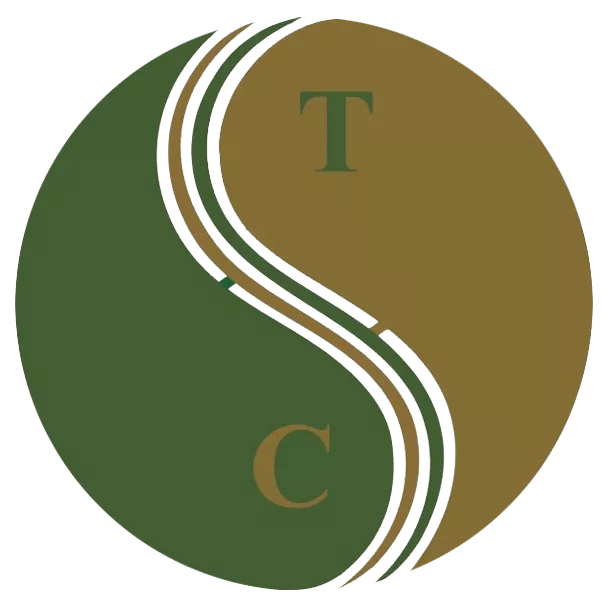 Art of Wellness Acupuncture & Traditional Chinese Medicine (TCM)11704 Wilshire Blvd, Suite 295, Los Angeles, CA, 90025
Art of Wellness Acupuncture & Traditional Chinese Medicine (TCM)11704 Wilshire Blvd, Suite 295, Los Angeles, CA, 90025
myartofwellness@gmail.com310-451-5522 Office Hours
MonClosedTue7:30 am --4 pmWed7:30 am --4 pmThu7:30 am -- 4 pmFri7:30 am -- 4 pmSat7:30 am -- 4 pmSunClosedOur office opens from Tuesdays to Saturdays 7:30 am to 4 pm, will be closed on Memorial day, Independent day, Labor day, Thanksgiving day, Christmas and New year.
-
Recent Posts
- How to Treat Rosacea With Acupuncture and TCM
- How to Treat Perioral Dermatitis With Acupuncture and TCM
- Lymphatic Drainage With Acupuncture and TCM
- How to Treat Turf Toe With Acupuncture
- How to Treat Nerve Pain With Acupuncture and TCM
- How to Treat Watery Eyes With Acupuncture and TCM
- How to Treat Ovarian Cysts With Acupuncture and TCM
- How to Treat Dystonia With Acupuncture and TCM
- Can Acupuncture Help Bad Breath?
- How to Treat Atopy with Acupuncture and TCM
- Plantar Fasciosis Treatment With Acupuncture and TCM
- How to Protect Yourself When Air Quality Is Poor
- How to Treat Spinal Headache With Acupuncture and TCM
- How to Treat Sarcoidosis With Acupuncture and TCM
- How to Treat Flu With Acupuncture and TCM
- Chinese New Year 2025 Year of the Snake
- Sign up to receive news and updates and get my free report:“The Top 10 Reasons to Try Acupuncture”

July 2025 M T W T F S S 1 2 3 4 5 6 7 8 9 10 11 12 13 14 15 16 17 18 19 20 21 22 23 24 25 26 27 28 29 30 31
Fibromyalgia
How to Treat Myofascial Pain Syndrome With Acupuncture and TCM
By Xiaomei Cai, L.Ac., Ph.D. and Qineng Tan, L.Ac., Ph.D.
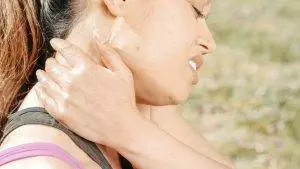
Muscle aches and pains? Knotted muscles? Pain in trigger points? These could be signs of myofascial pain syndrome. Acupuncture and TCM can provide myofascial release and help relieve chronic myofascial pain (MPS pain).
Myofascial pain disorder is a common, yet often overlooked chronic pain condition that affects the muscles and fascia. Fascia is the thin connective tissue that is found all over the body, holding muscles, organs, and blood vessels together. Fascia is also filled with nerves, which makes it highly sensitive.
Healthy fascia is thin, stretchy and pliable. Stress, injuries, weakness and other issues can cause fascia to tighten up, become sticky, dry, or thicker. This can cause painful knots to develop in your muscles.
These areas are sometimes called fascial adhesions, or myofascial trigger points, and they can be very tender to the touch and cause muscle soreness, aches and pains.
Chronic myofascial pain can seem very similar to fibromyalgia, or symptoms of ME/CFS, and is sometimes misdiagnosed as such. However, these conditions are distinct from one another.
Fibromyalgia causes widespread, diffuse pain and tenderness all over the body, while myofascial pain is centered around specific trigger point sites. Fibro, as it is sometimes called, is believed to be caused by a disorder within the central nervous system. Fibromyalgia is usually triggered by stress, trauma, hormonal changes, lack of sleep, or sensitivities to weather changes.
It has been suggested that long-term myofascial pain syndrome may ultimately lead to a person developing fibromyalgia, as the brain and nervous system become so used to experiencing pain that they begin to produce disordered pain signaling.
Acupuncture treatment, cupping, and therapeutic Chinese massage can provide trigger point therapy that is effective for relieving tight muscles and soreness.
Myofascial Pain Syndrome Symptoms
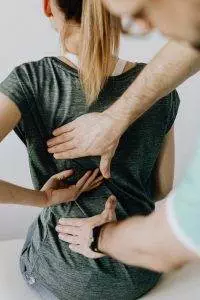
People experience myofascial pain differently from one another; each case is unique. For some people, the pain can come and go suddenly; for others, it’s a constant, dull pain.
Myofascial pain syndrome can feel like:
- Tight muscles, stiffness
- Throbbing pain
- Dull, aching pain
- Sore muscles, tender areas
- Knotted muscles, nodules or bumps in specific areas that are sore
- Muscle weakness
- Limited range of motion
- Trouble sleeping
- Headaches
- Fatigue
Myofascial pain can be localized in one area, or referred pain, which spreads to other nearby areas. Myofascial referred pain patterns can look like pain that originates in the rotator cuff which then spreads to the deltoid, and even down the arm to the hand.
What Causes Myofascial Pain?
Medical science is not entirely clear on the causes of myofascial pain syndrome, but it seems to occur more often in people who have experienced things like:
- Periods of inactivity, such as having one of your limbs in a cast
- Repetitive movements in your work
- Pinched nerves
- Injury to a muscle or muscle group
- Having to work outdoors in the cold
- Diabetic neuropathy
- Thyroid disorders, hypothyroidism
- Deficiencies in Vitamin D or folate, or iron deficiency
- Stress, chronic tension that leads to clenched muscles
- Structural conditions like scoliosis, spondylosis, or osteoarthritis
Estimates suggest that the majority of people who are treated for chronic musculoskeletal pain may have myofascial pain syndrome. Up to 85% of the general population may experience myofascial pain at some point in time.
Treatment for Myofascial Pain Syndrome
One of the primary approaches to managing myofascial pain syndrome is physical therapy. Physical therapists may use manual therapy, stretching exercises, and postural correction to address muscle imbalances, improve flexibility, and release tension in affected muscles. Trigger point therapy, which involves applying pressure to trigger points to release muscle knots and promote relaxation, is a common component of physical therapy for MPS.
Modalities such as heat therapy and cold therapy may also be used in conjunction with physical therapy to provide pain relief and enhance the effectiveness of treatment. Heat therapy helps to increase blood flow and promote muscle relaxation, while cold therapy can reduce inflammation and numb the affected area.
In addition to physical therapy and modalities, medications may be prescribed to manage pain and improve symptoms associated with myofascial pain syndrome. Nonsteroidal anti-inflammatory drugs (NSAIDs) such as ibuprofen or naproxen may be recommended to reduce inflammation and alleviate pain. Muscle relaxants such as cyclobenzaprine or benzodiazepines may also be prescribed to help relax tense muscles and improve sleep quality. In some cases, tricyclic antidepressants or anticonvulsant medications may be used to modulate pain signals and improve overall pain management.
Trigger point injections are another treatment option for myofascial pain syndrome, particularly for individuals who experience severe or persistent symptoms that do not respond adequately to conservative measures. During a trigger point injection procedure, a local anesthetic or corticosteroid is injected directly into the trigger point to help alleviate pain and reduce muscle tension.
Acupuncture needling is also considered an effective and valuable treatment option for myofascial release and relief of musculoskeletal pain.
Can Acupuncture Help Myofascial Pain Syndrome?

Many studies conducted over the past two decades point to acupuncture as an effective mode of treatment for myofascial pain syndrome.
Acupuncture is effective for myofascial pain because it can positively affect the central nervous system, increase blood flow, increase endorphin production, improve fascial adhesions, and promote muscle relaxation. Acupoints used in TCM correspond closely with myofascial trigger points.
One study looked at patients who received two acupuncture treatments per week for four weeks on trigger points in the upper trapezius. Patients reported significant reduction in pain after just two weeks.
Another study followed two groups of patients with myofascial pain centered in the neck area. One group received acupuncture treatment. The other group had acupuncture and also engaged in regular aerobic exercise. Findings showed that both groups experienced significant improvement in pain symptoms.
A review of studies found that acupuncture was effective both for reducing myofascial pain and improving function and mobility.
Acupuncturists may also use electro-acupuncture, cupping, and massage techniques like gua sha and tui na to help move lymph and blood, release muscle trigger points, and improve muscular movement that has been limited by pain.
Acupuncture Near Me for Myofascial Pain Syndrome in Los Angeles
At Art of Wellness Acupuncture in West L.A., we have over 35 years of experience helping people find relief from musculoskeletal pain of all kinds. Dr. Tan and Dr. Cai are able to use electro-acupuncture, cupping, and massage techniques like Tuina for myofascial release. If you are suffering from muscle pain and tenderness, do not hesitate to make an appointment with us.
*This article is for education from the perspective of Traditional Chinese Medicine only. The education provided by this article is not approved by FDA to diagnose, prevent, treat and cure human diseases. It should not stop you from consulting with your physician for your medical conditions. Traditional Chinese Medicine is based on Qi, which is an invisible force that usually cannot be observed by modern science. Because science focuses on testing ideas about the natural world with evidence obtained through observation, these aspects of acupuncture can’t be studied by science. Therefore acupuncture and Chinese herbs are often not supported by double-blind, randomized trials, and they are considered alternative medicine therapies in the United States.
How to Treat Costochondritis With Acupuncture and TCM
By Qineng Tan, L.Ac. Ph.D. and Xiaomei Cai, L.Ac., Ph.D.

Chest pain? Rib pain, sternum pain? These can be costochondritis symptoms, caused by inflammation of the cartilage that connects the ribs to the sternum. Acupuncture and TCM can provide costochondritis treatment to relieve pain and inflammation.
Costochondritis is a pain condition caused by inflammation of cartilage in the rib cage. It can be scary, because the pain can feel like a heart attack or a symptom of heart disease.
It is quite common for people who are experiencing costochondritis pain to visit the emergency room complaining of chest pain. Almost 10% of ER visits are related to chest pain symptoms, and a significant number of those turn out to be related to something other than heart problems.
Sometimes called “chest wall pain syndrome,” or costosternal syndrome, costochondritis is considered a syndrome because it presents as a set of symptoms that often does not have a clear cause.
Possible causes of costochondritis include:
- Trauma or injury to the chest or ribs
- Persistent cough
- Repeated bouts of vomiting
- Chest or lung infection
- Allergies that affect the lungs
- Fibromyalgia
- Tietze syndrome
Suddenly doing some kind of heavy labor or intense workout that you’re not used to, that causes you to be winded, could cause inflammation of the chest. Playing contact sports in which you may be tackled or collide with another player or get hit hard with a ball in the chest could also cause costochondritis.
Tietze syndrome is a rare condition in which the cartilage connecting the ribs to the breastbone becomes inflamed and swollen. With Tietze syndrome, the pain and swelling in the chest is usually higher up, around the second and third ribs.
Costochondritis pain usually is felt more on the left side of the chest, radiating outward, and there isn’t any swelling involved.
Rib pain may be exacerbated when lying down, which can make it difficult to sleep comfortably.
Costochondritis is most commonly experienced by people in middle age (40-50s), but it can occur in children and adolescents, as well as adults.
In most cases, costochondritis is temporary. However, costochondritis pain can limit your activities and be debilitating for weeks, or even months. One study showed that up to a third of adults reported pain persisting beyond a year.
Acupuncture has been shown to help alleviate costochondritis pain, often in a matter of weeks.
Costochondritis Symptoms
Costochondritis pain can range anywhere from a slight tenderness to severe chest pain. In mild cases, the pain may go away in a matter of days, but in other cases, the pain can become serious.
Symptoms of costochondritis include:
- Sharp chest pain
- Chest pressure, chest ache, tenderness in breastbone
- Pain on the left side of chest, to the left of the breastbone
- Rib pain in more than one rib
- Pain radiating to shoulders and/or arms
- Chest pain when coughing, sneezing, or taking a deep breath
- Pain in chest when reaching up or twisting the torso
- Rib pain when lying down
- Pain when hugging someone
- Pain when putting on a seatbelt
Medical Diagnosis and Costochondritis Treatment
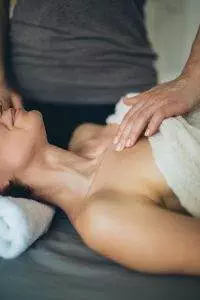
Other than the doctor palpating the area around your breastbone and ribs, there is no specific test to determine if you have costochondritis.
Chest pain can be an indicator of a variety of health conditions, including heart problems or lung problems, so it is always important to get it checked out with a healthcare professional. They will rule out other problems by ordering an EKG or chest X-ray in order to get to a diagnosis of costochondritis.
Treatment will consist of recommendations for ways to alleviate pain. Over-the-counter nonsteroidal anti-inflammatory drugs (NSAIDs) such as ibuprofen (Advil, Motrin IB) or naproxen (Aleve) can help reduce inflammation and pain.
In cases of more severe or persistent pain, a doctor may prescribe stronger pain medications such as prescription-strength Motrin or muscle relaxers.
Applying heat or cold packs to the affected area can help reduce inflammation and alleviate pain. Some individuals find relief by alternating between heat and cold therapy.
In cases where pain is severe and not responding to other treatments, corticosteroid injections directly into the affected area may provide temporary relief by reducing inflammation.
Acupuncture treatment is a great way to relieve pain and reduce inflammation, without the side effects that can result from using pain medications or steroids for several weeks or months.
Can Acupuncture Help Costochondritis?
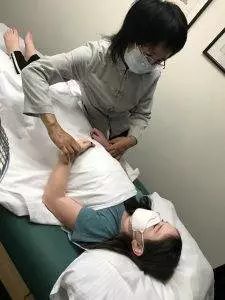
Acupuncture has been used for many centuries to treat pain and inflammation. Now, research is able to show how and why this modality is able to regulate inflammatory responses. Acupuncture affects the nerve signaling that produces hormones like dopamine and can reduce the production of cytokine storms. This is why acupuncture can help relieve inflammation and chest pain of costochondritis.
In TCM theory, pain and inflammation are usually considered to occur because of stagnation, or stasis, of blood and/or Qi (life force energy). The same symptoms can occur in different individuals because of different imbalances in the organs systems that are causing the blockages and different pathogenic factors, such as excess heat, dampness, etc.
Costochondritis inflammation can occur due to dampness and stagnation of Qi in the liver, spleen, and/or kidney systems. Depending on each patient’s specific situation, your acupuncturist will choose acupoints to open channels, clear dampness, heat, and phlegm. This allows for Qi and blood to flow smoothly again, cooling down the inflammation and relieving pain.
One case study of six women who were treated for costochondritis pain with acupuncture found that all patients reported improvement and were able to discontinue taking OTC pain medications.
One pediatric study looked at young students suffering from costochondritis; they were missing school, limiting their sports, dance, and work, and having trouble sleeping. After 4-6 weeks of acupuncture treatment, these patients reported a significant reduction in pain, and were able to resume their usual activities.
Not only is acupuncture treatment effective for relief of costochondritis pain; it can work quickly. In many cases, patients feel better after one or two treatments.
Acupuncture Near Me for Costochondritis in Los Angeles Area
Dr. Tan and Dr. Cai of Art of Wellness Acupuncture in West L.A. have been helping treat pain conditions for over 35 years. Our office is a home away from home where patients are able to relax and find relief from pain and inflammation. If you or someone you love is experiencing chest pain due to costochondritis, please do not hesitate to come in for a consultation.
*This article is for education from the perspective of Traditional Chinese Medicine only. The education provided by this article is not approved by FDA to diagnose, prevent, treat and cure human diseases. It should not stop you from consulting with your physician for your medical conditions. Traditional Chinese Medicine is based on Qi, which is an invisible force that usually cannot be observed by modern science. Because science focuses on testing ideas about the natural world with evidence obtained through observation, these aspects of acupuncture can’t be studied by science. Therefore acupuncture and Chinese herbs are often not supported by double-blind, randomized trials, and they are considered alternative medicine therapies in the United States.